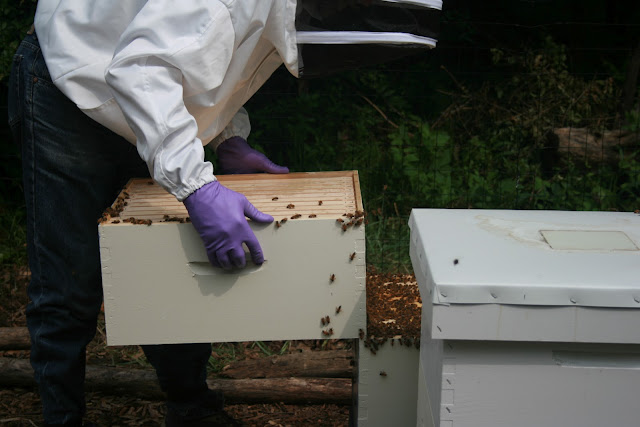| There she is - little easier- because the breeder marked her with white paint (white for 2011 - so she is an over-wintered queen - hearty and already laying strong and steady). Queens raised this year will be marked with a yellow marker - red next year. Good to have the queen marked. If we find an unmarked queen, that's one raised by the colony. Another good pic to zoom - you can see the white larvae pretty good in some of these cells. The worker bees add honey and then cap with wax. The queen lays one egg in each cell - it goes from egg to larvae to pupae (spins a coccoon), and finally reaches adult stage. About 24 days for a worker bee to emerge from a freshly laid egg. 28 days for a drone, Future queen bees are fed royal honey, and hatch in 19 days, then fed royal jelly. |






















No comments:
Post a Comment